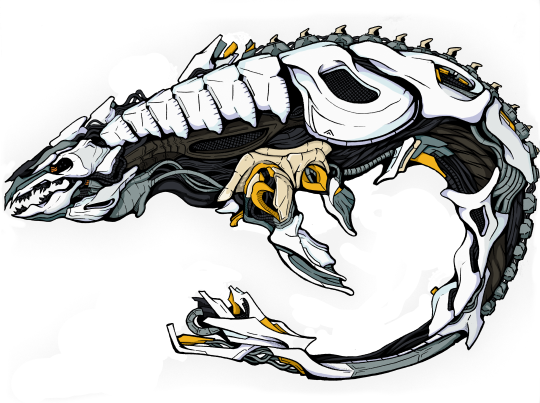#Hydrosphere
Explore tagged Tumblr posts
Photo


11K notes
·
View notes
Text
Significant features of the global cycle of copper are summarized in Fig. 13.7.

"Environmental Chemistry: A Global Perspective", 4e - Gary W. VanLoon & Stephen J. Duffy
#book quotes#environmental chemistry#nonfiction#textbook#copper#atmosphere#lithosphere#hydrosphere#biosphere#aerosol#precipitation#industrial emissions#dust#salt spray#sea salt#sea water#fresh water#leaching#sedimentation#soil#oxide#hydroxide#sulfide#mining#tailings#plants#chalcopyrite
3 notes
·
View notes
Text
In terms of the hydrosphere, the ultimate definition could be to say that, unless water is 100% H2O (i.e. unless it is pure in the literal chemical sense), it is, at least to some extent, polluted.
"Environmental Chemistry: A Global Perspective", 4e - Gary W. VanLoon & Stephen J. Duffy
#book quote#environmental chemistry#nonfiction#textbook#hydrosphere#water#purity#pollution#water pollution
0 notes
Text
WBBSE Solutions For Class 10 Geography And Environment Chapter 3 Hydrosphere
0 notes
Text
WBBSE Solutions For Class 10 Geography And Environment Chapter 3 Hydrosphere
0 notes
Text
I wonder how the Starfall Isles' broken gravity affects the tides
#every day i look at sornieth's hydrosphere and go 'wow! you're even more messed up than i thought!'#flight rising#abbey babblings
9 notes
·
View notes
Text
I'm beginning to suspect that a planetary civilisation that starts using generative AI propaganda at about the same time as it hits peak exploitation of it's fossil carbon reserves, is a very good answer to the Fermi Paradox
I think covid pulled some kinda psychic ripcord for anyone already primed for political derangement. The combinaton of social isolation and algorithm-driven radicalization just broke people. Everyone I talk to has a story of some relative that nobody talks to anymore.
#i mean#Maximum misinformation#Just when you're hitting peak atmospheric destabilisation#and your criosphere and hydrosphere is scrambling to catch up#you get authoritarian AI misinfo fash crippling any sensible response
7K notes
·
View notes
Text
Things were supposed to get better
They told me that things would get better
1 note
·
View note
Text
Casually going a little feral over that one planet the james webb telescope saw that might have life on it. Like genuine potential to see extraterrestrial life. Totally absolutely normal i assure you (I'm fucking NOT)
#just to be clear it's not confirmed to have life#it might not#its just a possibility#but its a planet in the goldilocks zone with atmospheric hydrogen and likely a significant hydrosphere#and there were chemical compounds in the atmosphere that on earth are only created by living organisms#BUT this doesn't confirm anything and scientists and researchers are going to need a long time to go through all the data#and do more observations#those gasses might be made by volcanoes
0 notes
Text
The likelihood that other technologically sophisticated societies exist is smaller than previously thought, because basic amenities we take for granted on Earth—continents, oceans, and plate tectonics—are cosmically rare.
[...]
Most geologists will agree with Stern’s and Gerya’s argument that plate tectonics should be included as a criterion for long-term planetary habitability. Earth’s tectonic system allows the planet’s atmosphere and hydrosphere to remain in communication with its interior, in a remarkable, self-perpetuating cycle. Subducted ocean crust—seafloor that slips down into Earth’s interior—carries water back into the mantle, and at shallow depths, this water lowers the melting temperature of mantle rock, giving rise to unusual magmas that create the continental crust—what we surface dwellers live on—which is rich in rare elements, like phosphorus, that are critical to life. At greater depths, subducted water acts to decrease the viscosity of the mantle, allowing it to churn, or convect, more vigorously—which in turn drives plate motion. When the Earth’s mantle exports heat via convection, it encourages the liquid iron outer core to convect as well, and this generates Earth’s protective magnetic field, which shields the surface environment from harmful cosmic radiation. Without plate tectonics, continents would quickly be eroded to sea level. But tectonic collisions continuously rejuvenate Earth’s topography, providing rivers with more energy to transport nutrient-rich sediments to shallow marine environments. In other words, plate tectonics is entangled with all the phenomena that support life on Earth.
17 July 2024
334 notes
·
View notes
Text
a shame that drexciya never got to work with the people that developed system shock... imagine having them on SS2, or morphology. i am happy that they (morphology) are still together, their last album is crazy good
drexciya had the perfect transmitting cybernetic modules energy.. like being all by yourself on pluto kind of music lol. this is just so perfect, repetitive and weird
181 notes
·
View notes
Text


187 notes
·
View notes
Text
The global phosphorus cycle is described in Fig. 14.11.

"Environmental Chemistry: A Global Perspective", 4e - Gary W. VanLoon & Stephen J. Duffy
#book quotes#environmental chemistry#nonfiction#textbook#phosphorus#cycle#atmosphere#aerosol#precipitation#hydrosphere#sea water#sea salt#salt spray#fresh water#decomposition#erosion#leaching#sedimentation#guano#dust#lithosphere#detritus#organic matter#inorganic#sediment#biosphere#plants#apatite
2 notes
·
View notes
Text
They are usually of terrestrial origin and have been carried to the hydrosphere as eroded material in run-off and by winds or glaciers.
"Environmental Chemistry: A Global Perspective", 4e - Gary W. VanLoon & Stephen J. Duffy
#book quote#environmental chemistry#nonfiction#textbook#clay#minerals#terrestrial#hydrosphere#erosion#runoff#wind#glacier
0 notes
Text
Zero Dawn Hydrosphere - Floodrage, Combat-Class Machine



Floodrage - Lv 45 Combat-Class (Active, Deactivated, Parts Salvaged)
Origin - Cauldron Kappa
Length - 22m
Elements - Plasma, Purgewater, Acid
Range: Mid to South Pacific
The Floodrage is the most direct representation of HEPH’s ongoing threat escalation in the South Pacific. Specifically designed to counter and negate Quen Naval supremacy and inflict heavy damage on their fleets, the Floodrage exists to ruthlessly and efficiently sink ships.
The upper carapace is impervious to conventional tribal weaponry but can be pierced by sustained fire from Deathbringer guns. Vents under the carapace can exude acid and Purgewater to create environmental hazards in the water and the openings on each side of the lower jaw can spray high-pressure Purgewater to dampen elemental weaponry.
The Floodrage’s primary weapons are its plasma capabilities - the tail blade superheats to tear pieces off of ships as it passes under them, and inside the machine’s throat is a modified version of the Slaugtherspine’s plasma beam weapon.
Weak points: ventral Purgewater sac, plasma canisters, tail blade, relative lack of armor on underside.
Strategy: Extremely dangerous. Do not attempt to fight without ship-mounted weaponry or a Waterwing mount. Quen rope ballistae aimed under armor plates will tether and temporarily slow the machine, making weak spots on the underside easier to hit with conventional weapons. A Waterwing mount can maneuver around the Floodrage underwater.
Resources: Glowblast, Purgewater, Metalbite, Machine Muscle, Volatile Sludge, Crystal Braiding, Shards, Piercing Spike
Upgrade Resources: Sturdy Hardplate, Large Machine Core, Luminous Brainstem, Floodrage Machine Core, Floodrage Primary Nerve, Floodrage Machine Heart, Floodrage Tail Blade
#horizon#horizon machine#horizon zero dawn#horizon forbidden west#hzd#hfw#guerrilla games#aloy#hfw aloy#horizon fanart#my art#god I feel like such a dork did I overthink this thing#trying to fit it into existing and or prospective systems in the game was super fun to think about#hzd aloy
282 notes
·
View notes
Text
Monday Musings: Large Igneous Provinces
As the name suggests, large igneous provinces are very large accumulations of igneous rocks. Sometimes referred to as LIPs to shorten it (have I mentioned that geologists really like to abbreviate things?) they are often attributed to mantle plumes or divergent plate tectonics. The current minimum threshold to be a LIP is a coverage of 100,000 square km.

Large igneous provinces are created during short-lived igneous events. They often coincide with mass extinction events, global environmental and climatic changes and changes in the hydrosphere and atmosphere. They have played a major role in cycles of continental breakup and formations, new crustal additions from the upper mantle and supercontinent cycles.

So, how are LIPs formed? It’s important to understand how the mantle works and how it interacts with the crust along with lithospheric plate interactions. The mantle is very viscous, more solid than liquid. Its flow is driven by cold crust sinking into it through subduction of lithospheric plates while hot mantle plumes flow upward. We call this mantle convection. Most volcanism occurs due to plate tectonics.

Now, sometimes the plumes rise and spread out radially beneath the plate causing regions of uplift. We call these hotspots. The most famous ones are Hawaii and Yellowstone but there are numerous hotspots across the globe.

The origin of these are hotly contested (pun intended). There are three origins that have been proposed. One is deep, originating near the mantle-outer core boundary.

Another one says some originate from hot lava domes within the mantle. Lastly, some appear to originate in the upper mantle possibly due to the break up of lithospheric plates that have been subducted.

A competing hypothesis to mantle plumes is plate ruptures. Basically, stresses in the lithosphere cause fractures in the plates allowing melt to reach the surface through mantle convection.

Another hypothesis on the formation of hotspots and LIPs involves meteorite impacts. Seven pairs of hotspots and LIPs located on opposite sides of the globe from each other of the same age have been located. When a meteorite impacted oceanic crust, it allowed melt to reach the surface. At the same time, the energy released from the impact converted into seismic waves and propagated across the globe, converging on the exact opposite side of the planet fracturing the crust enough to let massive amounts of magma to erupt.

Likely, there is a LIP in your neck of the woods. In the U.S., we have the Columbia River Flood Basalts in Washington, Oregon and Idaho. It’s actually the youngest and smallest LIP covering about 81 square miles (210,000 km₂). It erupted during the Late Miocene Epoch for about 10-15 Ma.

In Europe, there is the North Atlantic Igneous Province centered on Iceland (for obvious reasons). It erupted from the mid Paleocene to the early Eocene epochs between 60.5 and 54.5 Ma. It covers around 500,000 sq miles (1.3 million sq km). It is one of the few that consists of both onshore and offshore flood basalts, sills, dikes, and plateaus.

In Asia, there are the Emeishan Traps a flood basalt in southwestern China. It erupted between 262 and 259 Ma during the Middle Permian Period. It covers 155,343 sq miles (250,000 sq km2). It is associate with a minor mass extinction event.

The Gondwana LIP is associated with the breakup of the supercontinent of Gondwana about 183 Ma which now consists of South America, Africa, Antarctica and Australia. The flood basalts are mostly in South Africa and Antarctica. It erupted during the Early Jurassic Period and is associated with the major Triassic-Jurassic extinction event. It spans about 3x10 ^6 km2 before the supercontinent broke apart.

During the early Cretaceous about 136-132 Ma and=other flood basalt occurred in South America (and a bit in Africa) called the Paraná-Etendeka Plateau. It covered 390.000 sq miles (1,000,000 sq km2). There was also a silicic component to this province, ignimbrites (hardened tuff) from explosive eruptions. The pyroclastic sheet has a thickness between 130-980 ft (40-300 m). This makes it the largest known explosive eruption on Earth.

In India are the famous Deccan Traps which erupted during the Late Cretaceous and early Paleogene Period meaning it spanned the K-Pg Extinction Event that killed the non-avian dinosaurs. They cover an area of 200,000 square miles (500,000 sq km) and may have contributed to the extinction event.

The Siberian Traps cover a vast majority of Russia (which is impressive considering the size of Russia. It is one of the biggest volcanic events, spanning 500 million years and covering 3 million sq miles (7 million sq km2). It spanned the Periman-Triassic boundary and may have contributed to the Great Dying, the largest mass extinction ever.

Thanks for joining me today to learn about igneous rocks and tune in tomorrow for some trivia fun. Fossilize you later!

32 notes
·
View notes